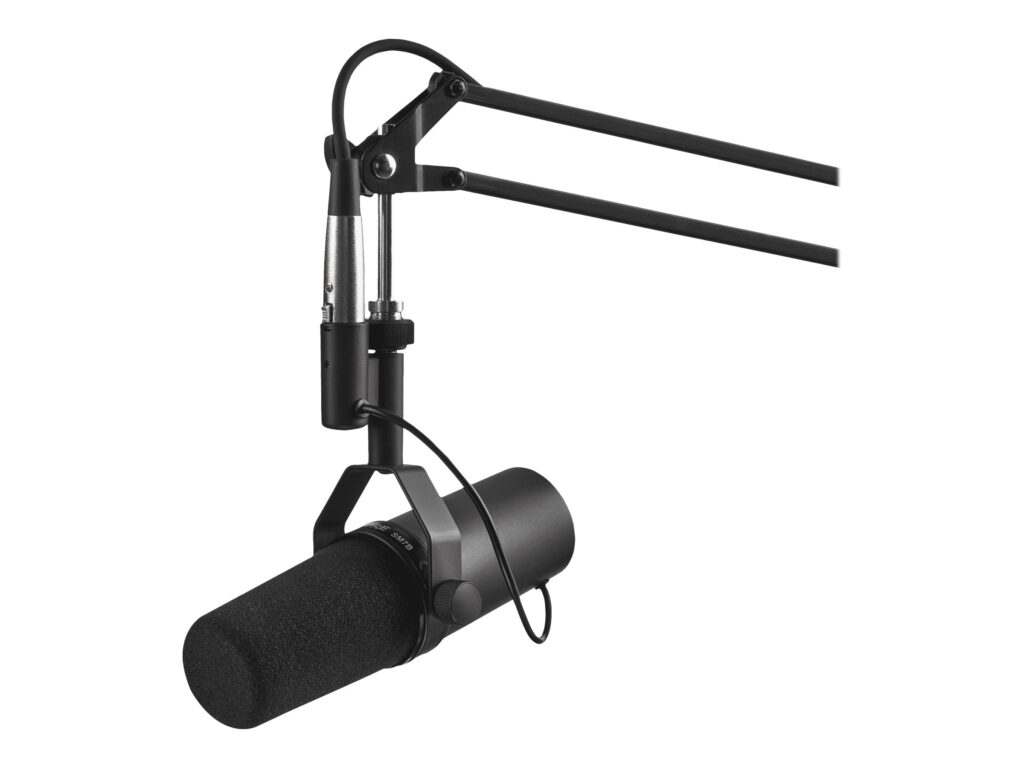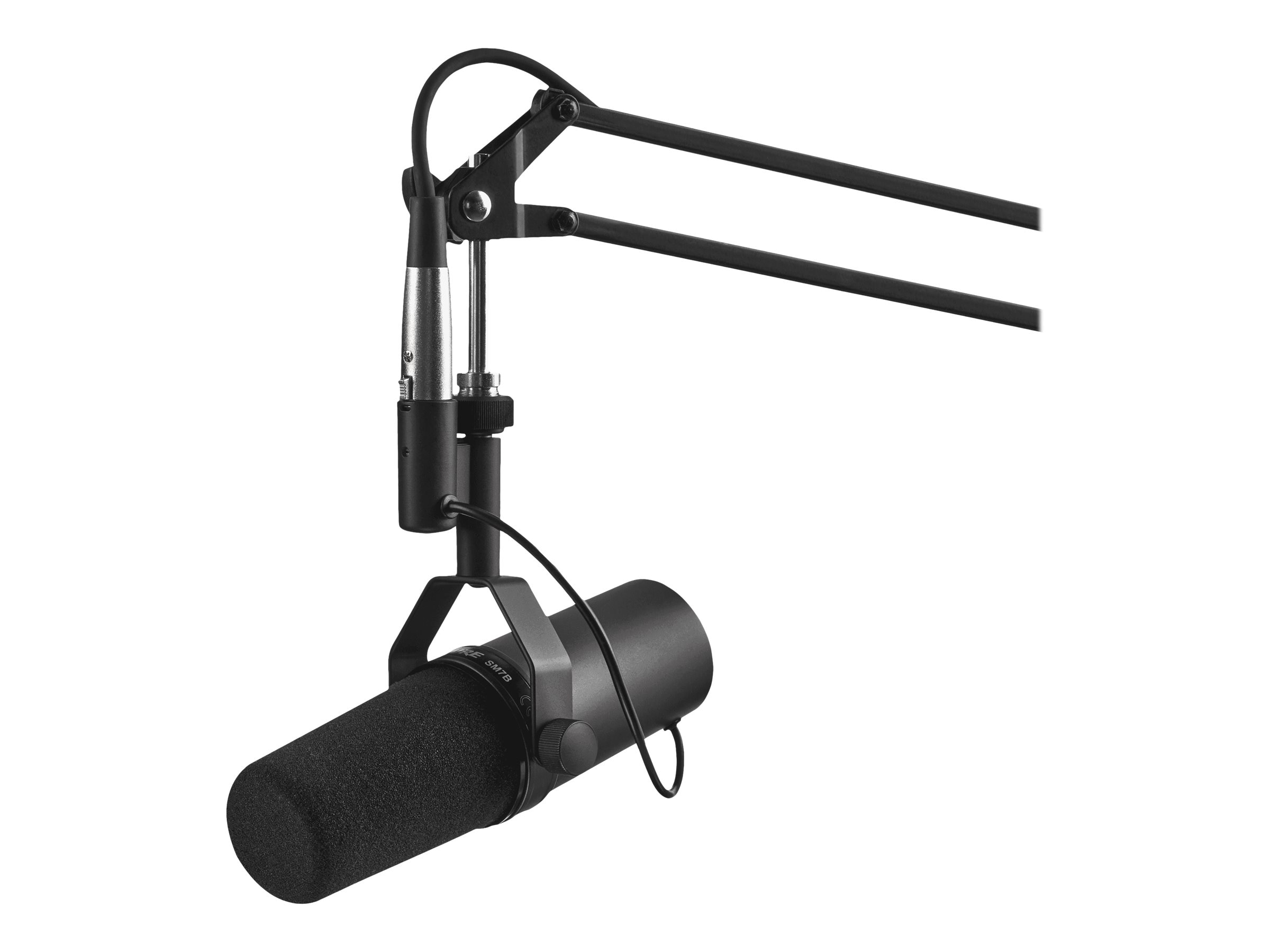
Shure SM7B: The Industry Standard Microphone You Need to Know
The Shure SM7B is more than just a microphone; it’s a legend. Revered by podcasters, streamers, musicians, and broadcasters alike, the Shure SM7B dynamic microphone has cemented its place as an industry standard. But what makes this seemingly simple microphone so universally beloved? This article delves into the history, technical specifications, applications, and enduring appeal of the Shure SM7B, explaining why it remains a top choice for professionals and hobbyists seeking exceptional audio quality.
A Legacy Built on Performance
The story of the Shure SM7B begins in 1973 with its predecessor, the Shure SM7. Originally designed for broadcast and voice-over applications, the SM7 quickly gained traction due to its exceptional ability to reject electromagnetic hum and deliver a clean, natural sound. The Shure SM7B, an updated version released in 2001, refined these qualities and introduced improved shielding against broadband interference, making it even more versatile in noisy environments. This evolution ensured that the Shure SM7B continued to meet the evolving needs of audio professionals.
Technical Specifications and Features
Understanding the technical specifications of the Shure SM7B helps to appreciate its performance capabilities:
- Type: Dynamic
- Polar Pattern: Cardioid
- Frequency Response: 50 Hz to 20 kHz
- Impedance: 150 Ohms
- Sensitivity: -59 dBV/Pa (1.12 mV)
- Hum Pickup: -24 dB equivalent SPL in a 1 mOe field
Key features that contribute to the Shure SM7B’s popularity include:
- Cardioid Polar Pattern: Rejects off-axis sound, minimizing background noise and feedback.
- Wide-Range Frequency Response: Captures a full and natural sound, suitable for various vocal and instrument applications.
- Pop Filter and Windscreen: Reduces plosives (hard ‘p’ and ‘b’ sounds) and wind noise for cleaner recordings.
- Electromagnetic Shielding: Minimizes interference from computers, lights, and other electronic devices.
- Bass Roll-Off and Mid-Range Emphasis Switches: Allows users to tailor the microphone’s sound to their specific needs.
Why is the Shure SM7B so Popular?
Several factors contribute to the enduring popularity of the Shure SM7B:
- Exceptional Sound Quality: The Shure SM7B delivers a smooth, natural, and detailed sound that is highly sought after in professional audio applications.
- Versatility: While primarily known for vocals, the Shure SM7B excels at recording a wide range of instruments, including guitars, drums, and amplifiers.
- Durability: Built to withstand the rigors of studio and broadcast environments, the Shure SM7B is a robust and reliable microphone.
- Rejection of Background Noise: The cardioid polar pattern and excellent shielding effectively minimize unwanted noise, making it ideal for recording in less-than-ideal acoustic environments.
- Timeless Design: The Shure SM7B’s classic design has remained largely unchanged for decades, a testament to its enduring appeal.
Applications of the Shure SM7B
The Shure SM7B’s versatility makes it suitable for a wide range of applications:
Voice Recording
The Shure SM7B is a go-to microphone for vocals, especially in podcasting and voice-over work. Its ability to capture a clear and natural sound, combined with its excellent noise rejection, makes it ideal for recording spoken word in various environments. Many popular podcasters and streamers rely on the Shure SM7B for its consistent and professional results. [See also: Best Microphones for Podcasting]
Music Recording
While often associated with vocals, the Shure SM7B is also a capable instrument microphone. It excels at recording electric guitars, snare drums, and even bass amplifiers. Its ability to handle high sound pressure levels (SPL) makes it suitable for capturing loud and dynamic instruments. Many engineers use the Shure SM7B as a secret weapon for recording rock and metal guitars, adding a unique character to the sound. [See also: Microphone Techniques for Guitar Recording]
Broadcast Applications
The Shure SM7B continues to be a staple in broadcast studios around the world. Its ability to deliver a clean and consistent sound, even in challenging acoustic environments, makes it a reliable choice for radio and television broadcasts. The microphone’s rugged construction ensures that it can withstand the demands of daily use in a busy broadcast setting.
Setting Up the Shure SM7B
To get the most out of your Shure SM7B, consider the following setup tips:
- Microphone Preamp: The Shure SM7B has a relatively low output level, so a good quality microphone preamp is essential to provide sufficient gain without introducing excessive noise. Preamps with at least 60dB of gain are recommended.
- XLR Cable: Use a high-quality XLR cable to connect the microphone to your preamp or audio interface.
- Microphone Stand: A sturdy microphone stand is essential for positioning the microphone correctly. A boom arm stand provides greater flexibility and allows for precise placement.
- Acoustic Treatment: While the Shure SM7B excels at rejecting background noise, improving the acoustics of your recording environment will further enhance the sound quality. Consider using acoustic panels or bass traps to reduce reflections and reverberation.
Alternatives to the Shure SM7B
While the Shure SM7B is an excellent microphone, several alternatives offer similar performance characteristics:
- Electro-Voice RE20: Another industry standard dynamic microphone known for its smooth and natural sound.
- Sennheiser MD 421 II: A versatile dynamic microphone with a wide frequency response and excellent transient response.
- Rode Procaster: A broadcast-quality dynamic microphone designed specifically for podcasting and voice-over work.
The Enduring Appeal of the Shure SM7B
The Shure SM7B’s enduring appeal lies in its combination of exceptional sound quality, versatility, and durability. It’s a microphone that has stood the test of time, remaining a top choice for professionals and hobbyists alike. Whether you’re a podcaster, musician, or broadcaster, the Shure SM7B is a microphone that you can rely on to deliver exceptional results. Its reputation is well-earned, and its continued presence in studios and broadcast booths around the world is a testament to its quality and performance. From capturing the nuances of a spoken word performance to taming the roar of a guitar amplifier, the Shure SM7B consistently proves its worth as a true audio icon.
Conclusion
In conclusion, the Shure SM7B is more than just a microphone; it’s an investment in quality and reliability. Its versatility, robust build, and exceptional sound make it a valuable tool for any audio professional or enthusiast. While it may require a decent preamp to shine, the results are well worth the effort. The Shure SM7B remains a top contender in the world of dynamic microphones, solidifying its position as an industry standard for years to come. Its legacy is secure, and its future looks bright, continuing to empower creators with its unparalleled performance.

